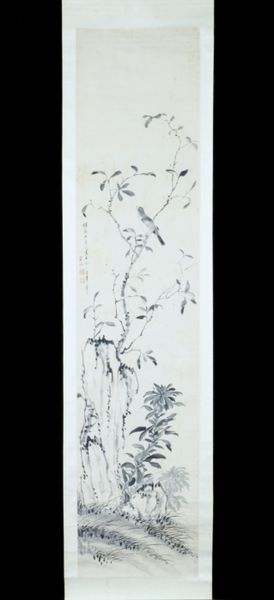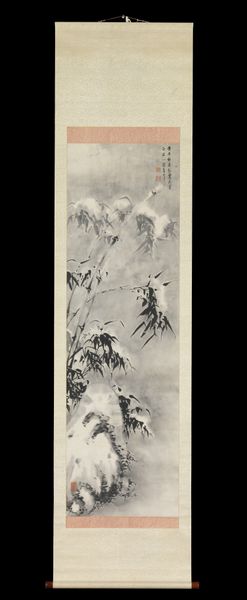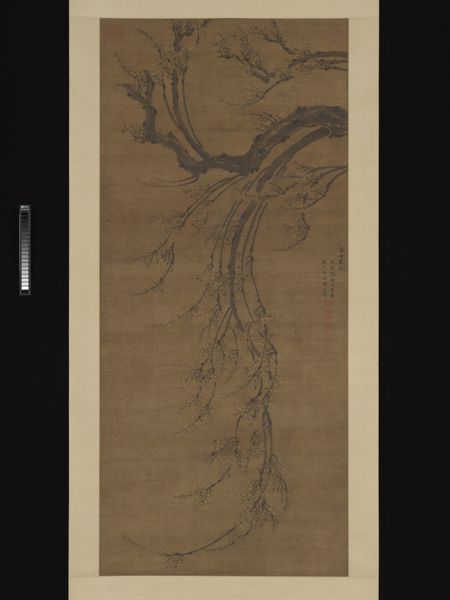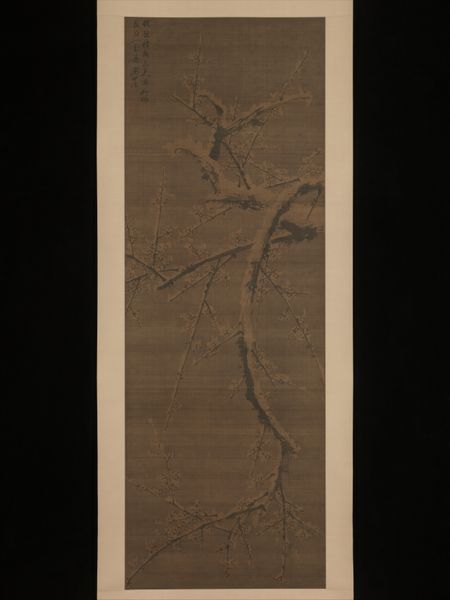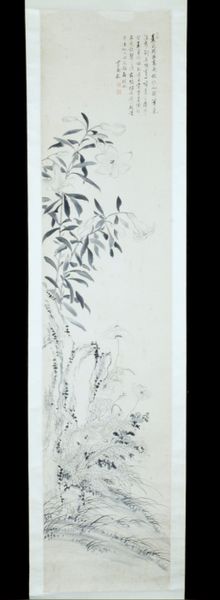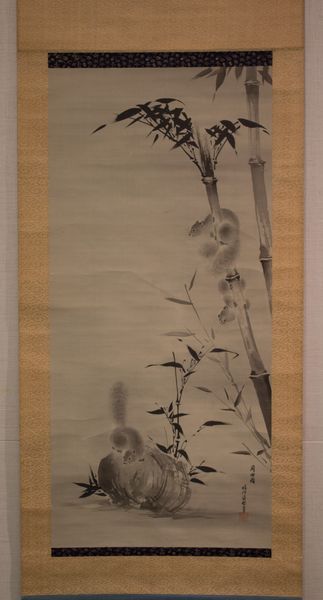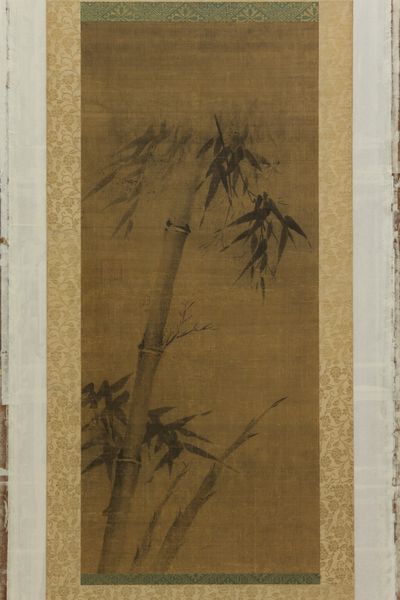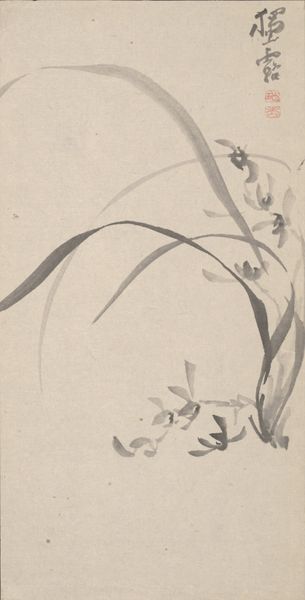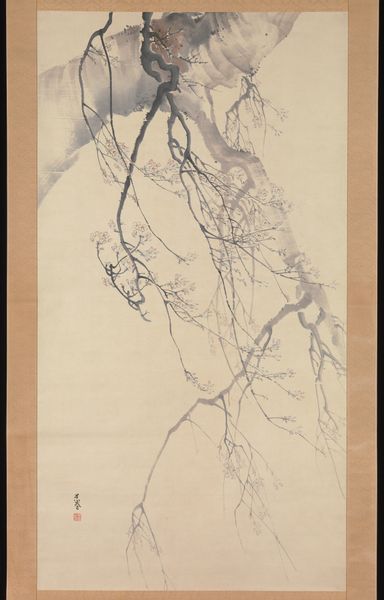
drawing, painting, paper, ink
#
drawing
#
painting
#
asian-art
#
landscape
#
japan
#
paper
#
ink
#
abstraction
#
line
#
outline
Dimensions: Image: 47 1/4 x 21 in. (120 x 53.3 cm)
Copyright: Public Domain
Editor: This is “Bamboo in the Wind,” painted by Taihō Shōkon sometime between 1691 and 1774, using ink on paper. The way the leaves are scattered about—it feels like I'm looking at a fleeting moment, almost a sigh on paper. What do you see in this piece? Curator: Ah, yes, a sigh captured! I love that. It’s a simple scene, right? Just bamboo swaying. But for me, it's a powerful reflection on resilience and adaptability. Notice how Shōkon uses such varying shades of ink – some parts are bold, definitive, others are almost whisper-thin. Like life, isn't it? Strong and fragile all at once. Does the calligraphic inscription mean anything to you? Editor: I hadn't really considered that! Is it directly related to the visual elements? Curator: Perhaps, or perhaps it is separate? In Japanese art, text can serve as both content and design, sometimes giving the artwork a more reflective depth and perspective than the eye may initially gather. Now, when you look at this work, does it make you feel that anything is missing, or lacking? Editor: Hmm... missing? Not exactly. Maybe it's the… simplicity. It’s so minimal; I'm used to seeing artworks that are much more visually loud, dense. It kind of encourages you to add the missing colors in yourself. Curator: Precisely! The "emptiness" in the art encourages engagement, and evokes the surrounding presence of wind itself. And you touch on something so vital here – negative space is such an important aspect of traditional ink paintings from East Asia, to make things meaningful without needing to be physically present. Tell me now, are your impressions of the bamboo the same as they were? Editor: Definitely! I see now that there’s more depth and reflection happening than I originally gave it credit for. It's no longer just about the plant; it’s the space around it, the implied movement, the resilience. Curator: Beautifully put. It's about finding meaning not just in what is depicted, but what is suggested. It's all so incredibly mindful!
Comments
No comments
Be the first to comment and join the conversation on the ultimate creative platform.


